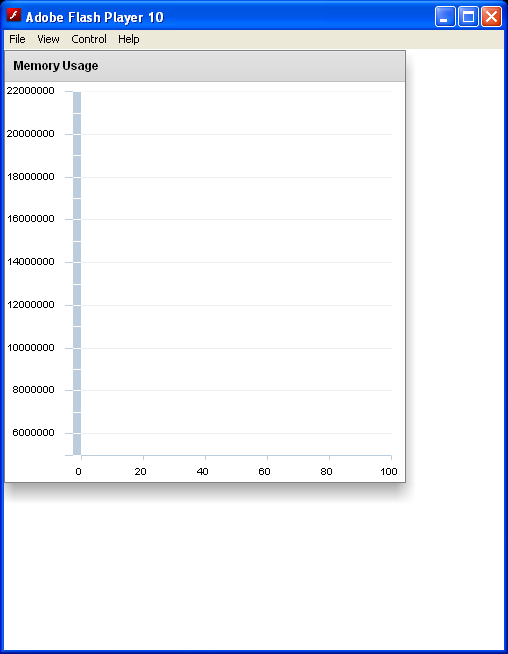Real Time ArrayCollection

<!--
Code from Flex 4 Documentation "Using Adobe Flex 4".
This user guide is licensed for use under the terms of the Creative Commons Attribution
Non-Commercial 3.0 License.
This License allows users to copy, distribute, and transmit the user guide for noncommercial
purposes only so long as
(1) proper attribution to Adobe is given as the owner of the user guide; and
(2) any reuse or distribution of the user guide contains a notice that use of the user guide is governed by these terms.
The best way to provide notice is to include the following link.
To view a copy of this license, visit http://creativecommons.org/licenses/by-nc-sa/3.0/
-->
<!-- charts/RealTimeArrayCollection.mxml -->
<s:Application xmlns:fx="http://ns.adobe.com/mxml/2009"
xmlns:mx="library://ns.adobe.com/flex/mx" xmlns:s="library://ns.adobe.com/flex/spark"
initialize="initTimer()" height="600">
<fx:Script>
import flash.utils.Timer;
import flash.events.TimerEvent;
import mx.collections.ArrayCollection;
[Bindable]
public var memoryUsage:ArrayCollection = new ArrayCollection();
public function initTimer():void {
// The first parameter in the Timer constructor
// is the interval, in milliseconds.
// The second parameter is how many times to run (0 is
// infinity).
var myTimer:Timer = new Timer(1000, 0);
// Add the listener for the timer event.
myTimer.addEventListener("timer", timerHandler);
myTimer.start();
}
public function timerHandler(event:TimerEvent):void {
var o:Object = new Object();
// Get the number of milliseconds since Flash Player or AIR started.
o.time = getTimer();
// Get the total memory Flash Player or AIR is using.
o.memory = flash.system.System.totalMemory;
trace(o.time + ":" + o.memory);
// Add new object to the ArrayCollection, which is bound
// to the chart's data provider.
memoryUsage.addItem(o);
}
</fx:Script>
<s:layout>
<s:VerticalLayout />
</s:layout>
<s:Panel title="Memory Usage">
<s:layout>
<s:VerticalLayout />
</s:layout>
<mx:LineChart id="chart" dataProvider="{memoryUsage}"
showDataTips="true">
<mx:horizontalAxis>
<mx:LinearAxis />
</mx:horizontalAxis>
<mx:verticalAxis>
<mx:LinearAxis minimum="5000000" />
</mx:verticalAxis>
<mx:series>
<mx:LineSeries yField="memory" />
</mx:series>
</mx:LineChart>
</s:Panel>
</s:Application>
Related examples in the same category